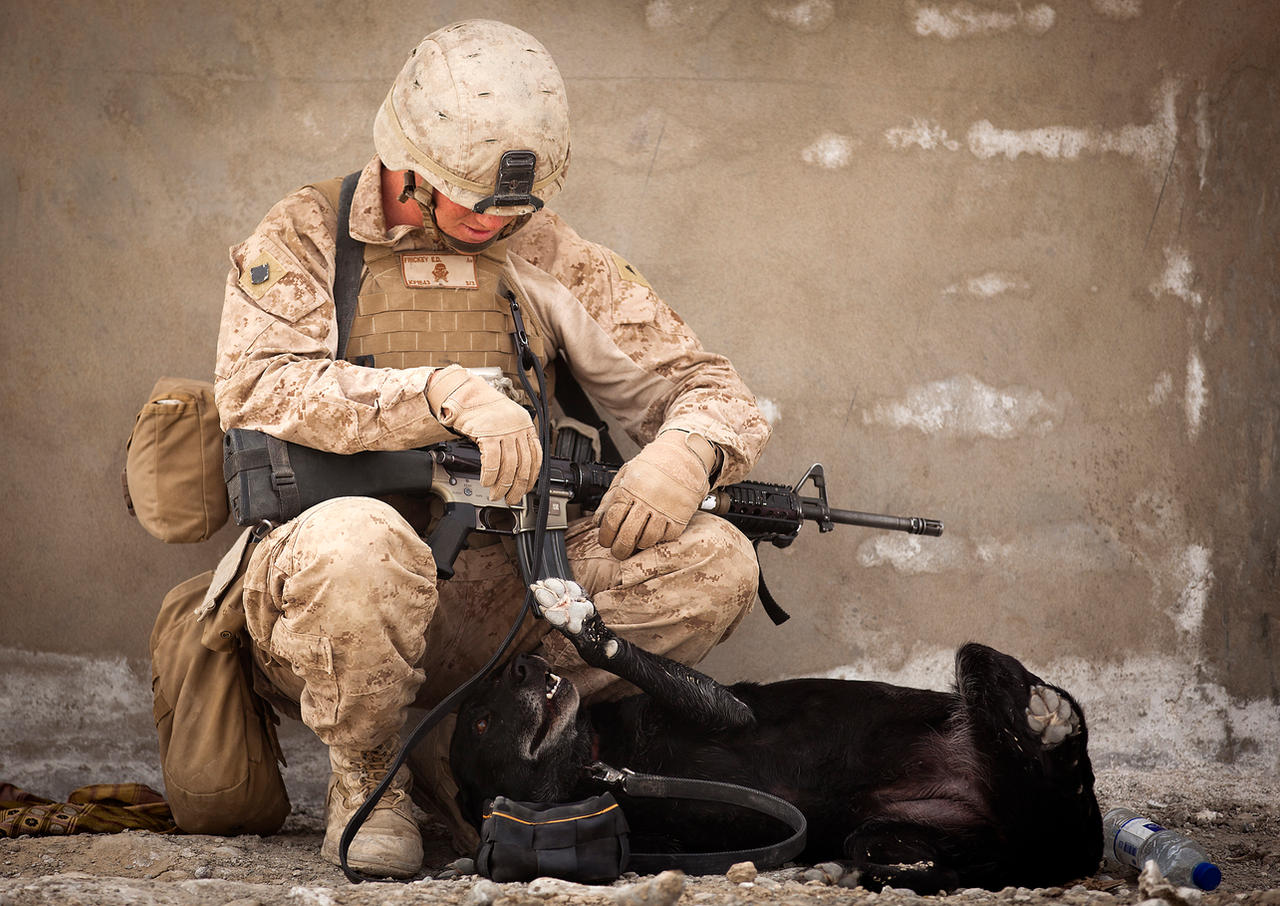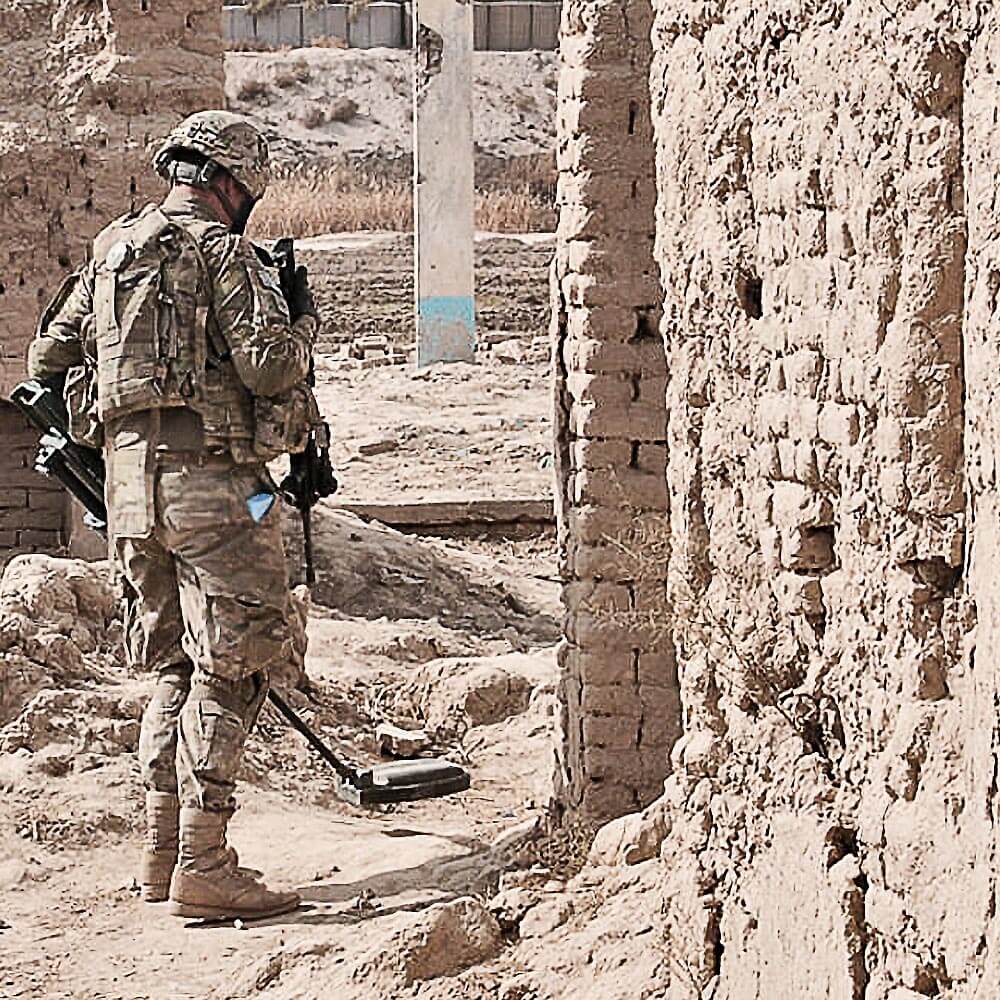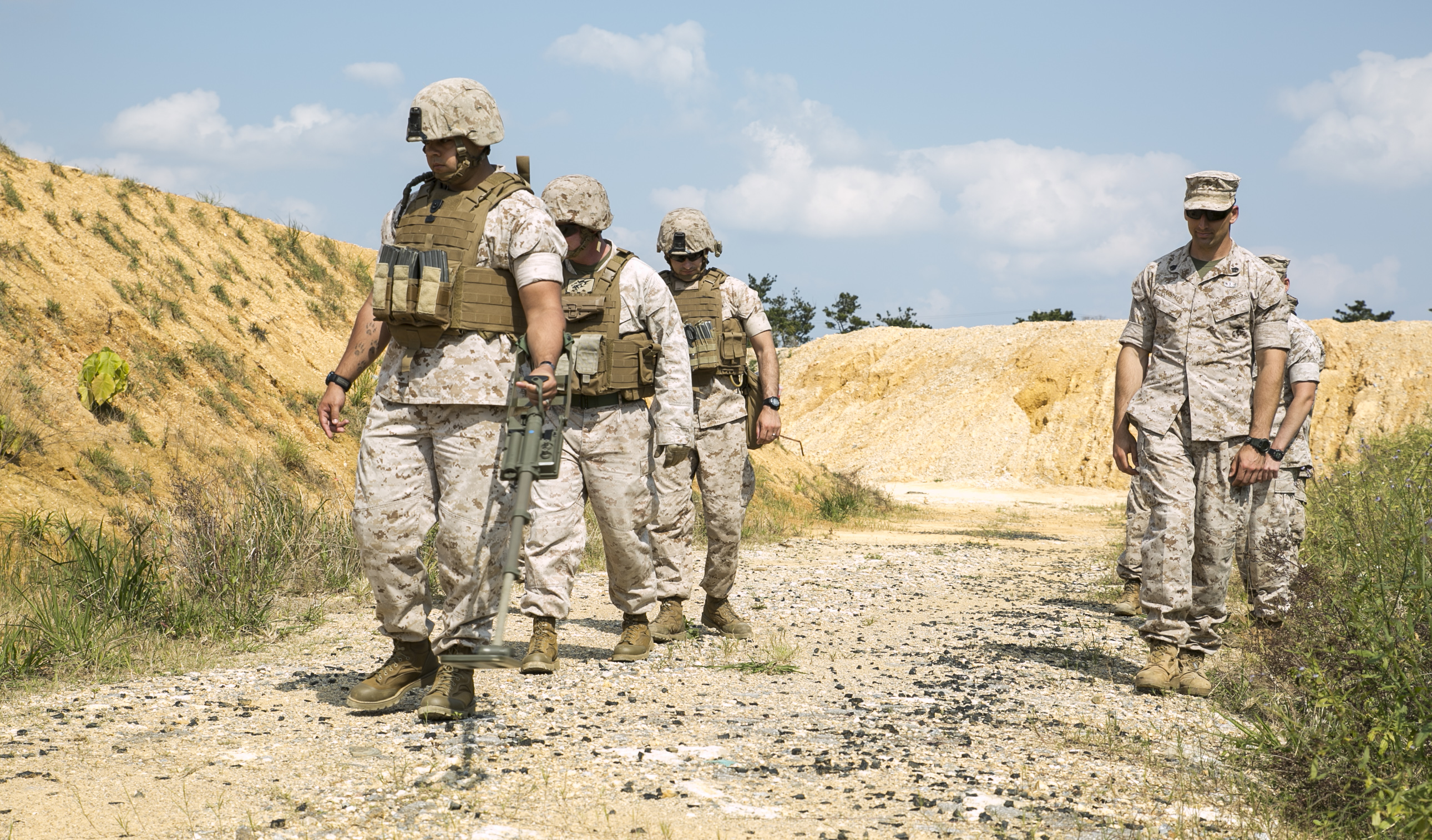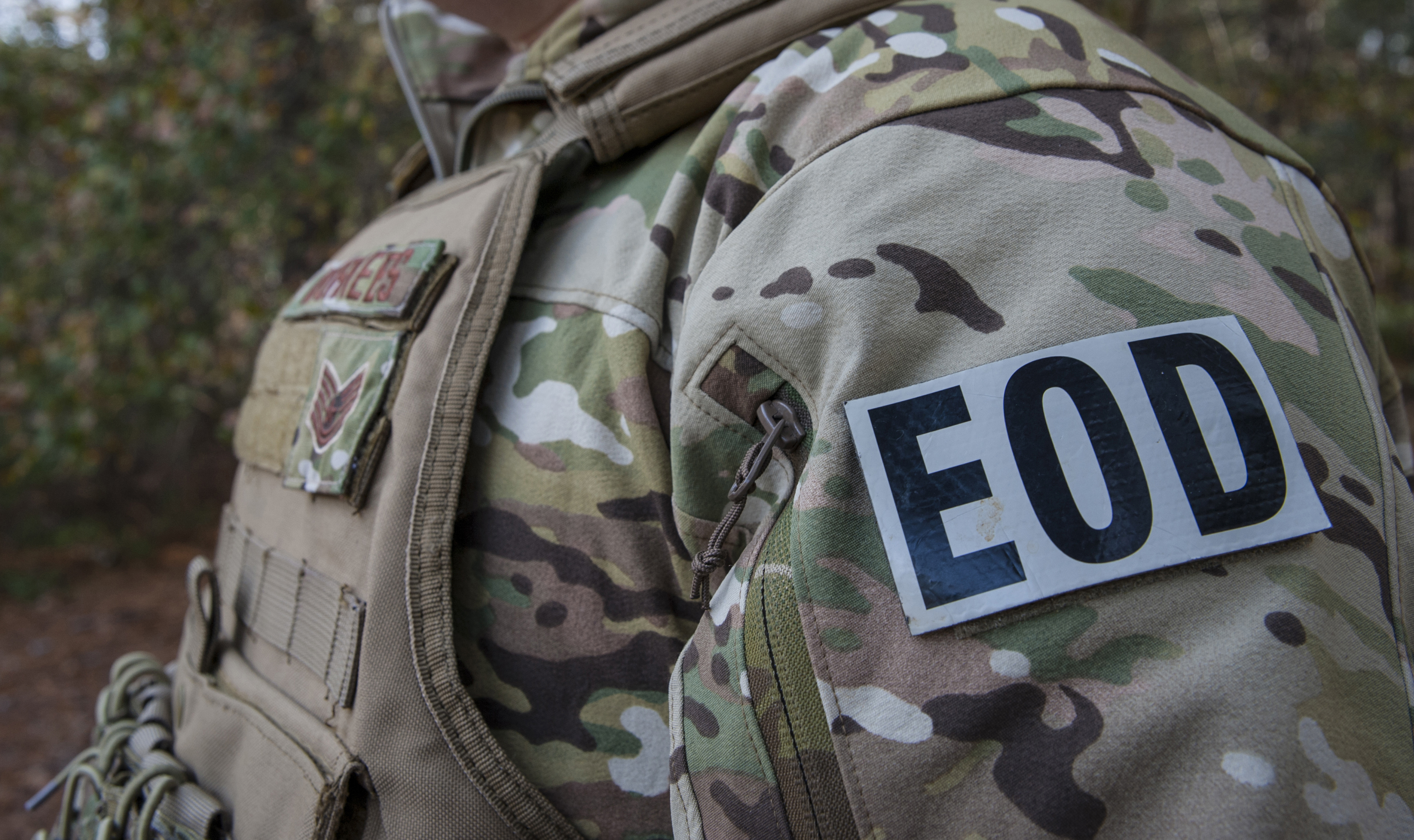Military Ied Detection - 1/3 Show text + Hide text - Sgt. Antonio Barajas, 3rd Platoon, Combat Company, 5th Battalion, 20th Infantry Regiment, 1st Squad, 14th Cavalry Regiment, uses a Gizmo to search for weapons caches in a garden outside the village of Sucrei Tangai, Afghanistan. Credit: USA) SEE ORIGINAL
2/3 Show text + Hide text - Pfc. Nikko Williams, 3rd Platoon, Combat Company, 5th Battalion, 20th Infantry Regiment, 1st Squad, 14th Cavalry Regiment, uses a Minehound to search for weapons caches in a garden outside the village of Sowkrei Tangai, Afghanistan. Photo credit: USA) SEE ORIGINAL
Military Ied Detection
3/3 Show text + Hide text - Sgt. Anthony Shaw (left), 787th Ordnance Company, 3rd Ordnance Battalion, uses a VMR-2 MineHound to search for secondary improvised explosive devices after an incident. MineHound enables ground-penetrating radar to operate ... (Photo credit: USA) VIEW ORIGINAL
Ied Detection Dog By Militaryphotos On Deviantart
FORWARD OPERATION BAS LAGHMAN, Afghanistan (July 6, 2012) - The Afghan National Association-U.S. A team of seven soldiers from the Explosive Ordnance Squad drove a dusty rural road in Shamulzai district ahead of the convoy; scanning the route with their eyes can help visually detect an improvised explosive device or IED hidden along the way.
When they see nothing, the VMR-2 Minehound and VMC-1 Gizmo sweep the same area with metal detectors, slowly and precisely checking before moving on.
"We were four and a half (kilometers) ahead of the whole convoy because we were hit by an IED on the way back (to Base Sweeney)," said Sgt. Antonio Barajas, 3rd Platoon, 5th Battalion, 20th Infantry Regiment, 1st Detachment, 14th Cavalry Regiment, Lewis-McChord, Wash. "All seven of us had Gizmos and Minehounds (and they) cleared the way so the rest of the convoy could safely reach FOB Sweeney."
"The gizmo is an easy (to use) metal detector used to detect metal, or you can move it to minerals," Barajas said as he described the two devices used that day.
Using Virtual Reality, U.s. Army Researchers In Orlando Seek To Train Soldiers On Ied Detection
"It's like the metal detectors you see guys on the beach but on steroids," said Pfc. Nico Williams, also of 3rd Platoon, 5-20th Infantry, 1-14th Cavalry Group.
The use of such gadgets has been a great success for both ANA and the International Security Assistance Force in Afghanistan. For Barajas and his team, the MineHound's ground-penetrating radar allowed them to spot the IED the next day, before the IED hit their convoy. It was only a hundred yards before the IED hit them. Without MineHound, Barajas' team had a chance to miss the roadside bomb.
The Minehound and Gizmo metal detectors are state-of-the-art two-sensor detectors that can detect non-metallic and low-metallic signature IEDs using ground wires and radar, according to an online description. “In addition to GPR, Minehound uses Vallon's advanced metal detector sensor, which is the same sensor used in Vallon's Gizmo VMC-1 detector to detect metallic and non-metallic hazards.
The Walloon company says it has more than 2,000 Minehound detectors currently in use in Afghanistan. They, along with Gizmo, proved invaluable in locating INA and weapons caches before they could be used against ANA or ISAF forces.
Army Researcher Invents Detector For Buried, Non Metallic Bombs
Use of Minehound and Gizmo detectors began with combat engineers and explosive ordnance disposal personnel, but they now assist non-IOD armed organizations, 5-20 infantry, in locating IEDs and ammunition caches.
Since the start of the war in Afghanistan in 2001, homemade bombs have become the insurgents' weapon of choice in Afghanistan, and arguably their most effective weapon. About 60 percent of all coalition forces wounded or killed in Afghanistan since the war began in 2001 have been caused by IEDs, according to a report by the United States Department of Defense's Washington-based Joint Improvised Explosive Device Countermeasures Organization. DC.
To complicate matters, insurgents in Afghanistan have increasingly built IEDs to bypass simple metal detectors. Some IEDs contain starting materials such as wooden boards, foam rubber and plastic containers. The finished product contains very little metal, making it difficult for a traditional metal detector to pick up, but not for Minehound's ground-penetrating radar.
Compact, sophisticated and lightweight metal detectors like MineHound and Gizmo are finding IEDs more often than ever before, all while reducing injuries or deaths to Afghan civilians, ANA and ISAF forces. In the hands of an infantry platoon or similar unit, they are also used to find ammunition caches, which often provide soldiers with enough ammunition to last weeks or months of combat.
Trainers In Iraq Focus On Ied Detection
"(Minehound and Gizmo are good in gardens) because they often hide caches," Barajas said. "So far we have found two caches with Gizmo and Minehounds, and also ANA is helping us with their resources."
Undoubtedly, advanced technology devices such as the VMR-2 Minehound and VMC-1 Gizmo metal detectors are helping coalition forces in Afghanistan.
"It helps a lot when you're in gardens or when you're going through cities using Gizmos and Minehounds because it picks up on something if it's not visible," Williams said. "That's why Gizmo and Mine Hound are so important," Williams said. "It helps keep people out of the war ... (you're) keeping them safe," Williams said. They are used to detect explosives and explosive precursors, to counter improvised explosive devices (IEDs), as part of counterterrorism, counterinsurgency or law enforcement efforts.

Specific systems with detection techniques and assessed technology readiness levels (TRLs) are described with both capabilities and characteristics.
Division West Soldiers Test New Technology To Defeat Ieds
Also concerned with hazard identification, DOTMLPF-P impact of each system and/or technique, procurement recommendations.
Talon: TALON transmits color, black and white, infrared and/or night vision to its operator, which can be up to 1000m away. . It has a battery life of 8.5 hours at normal operating speed, 2 standard lead acid batteries provide 2 hours and 1 additional Lithium Ion provides another 4.5 hours. It weighs less than 100 pounds (45 kg) or 60 pounds (27 kg) for the Reconstruction version. Its cargo bay accommodates various types of cargo. The robot is controlled by two-way radio or optical optical link from a handheld or wearable operator control unit (OCU), which provides data and continuous video feedback for precise positioning. The TALON (IED/EOD) carries soars and a robotic manipulator that is used by the US military to dispose of explosive ordnance and disarm improvised explosive devices.
Unmanned Ground Vehicles (SUGVs): SUGVs are lightweight, robust and specialized systems that enable users to see around corners and short distances in dense urban environments.
Body Armor: Soldiers, Marines, Airmen, and Marines have plenty of clothing to protect them from blasts and shrapnel. The past two decades have seen many advances in ergonomics, explosion-proof materials, and infection prevention. Today, there are many options for dismounted troops to protect against all types of threats. Below are some of the current and upcoming systems.
Know How: Improvised Explosive Devices (ieds)
E-SAPI / X-SAPI Ballistic Plates: Armored plates (form to be mounted on the body).
Pelvic Protection System: To reduce casualties and minimize damage to vital areas of the body, the US military has partnered with other organizations and industry to rapidly develop and deploy a Pelvic Protection System. The system consists of two layers, an inner layer (underwear) and an outer layer (ballistic protection).
As recently as 2007, the US military ordered the production of 10,000 MRAPs at a cost of more than $500,000 each and plans to order more MRAPs. There are now a variety of options produced by several different manufacturers.

Similar vehicles have been built and are in active service by private sector military, police and security companies around the world.
Army Orders Ground Penetrating Radars
Husky VMMD (Vehicle-Embedded Mine Detection) is a South African configured MRAP designed for route clearance and extraction of counter-IEDs. It is designed to clear mines and improvised explosive devices.
Huskies were first bred in the 1970s. The South African Defense Force used the Husky to clear mines on military convoy routes in Namibia and Angola during the South African Border War.
In the mid-1990s, the Husky conducted a two-year overseas comparative testing program as part of the US Department of Defense, which resulted in further research.

